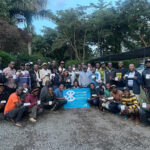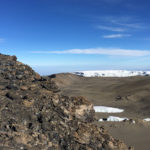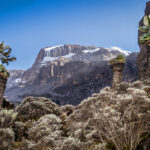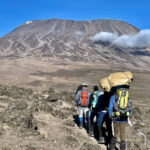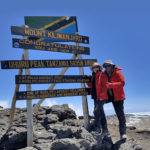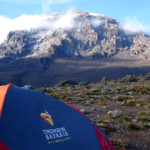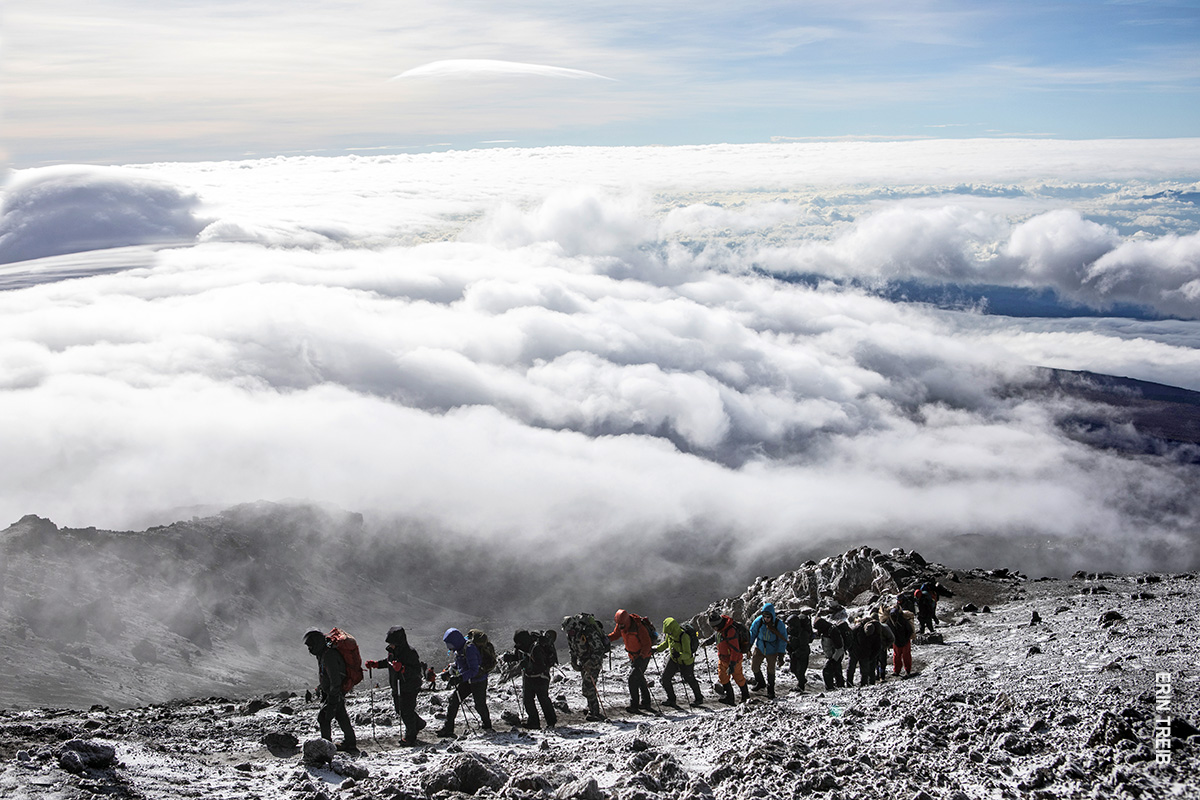
Climbing Kilimanjaro may be the toughest thing you ever do. Extreme altitude, tough weather and taxing physical demands create a trifecta of challenges that can pose serious health risks to the unprepared.
But with smart planning and adequate safety precautions, you can minimize those risks and join the thousands of trekkers who experience the adrenaline-pumping thrill of summit success every year.
Here’s why safety matters on Kilimanjaro, and what you can do to minimize your risk.
Risk: Altitude Sickness
By far the most common safety challenges on Kilimanjaro are related to the effects of altitude. You can’t train for them. Your best bet is to know what to expect, acclimatize slowly and listen to your guides–they are trained to recognize and manage issues like these.
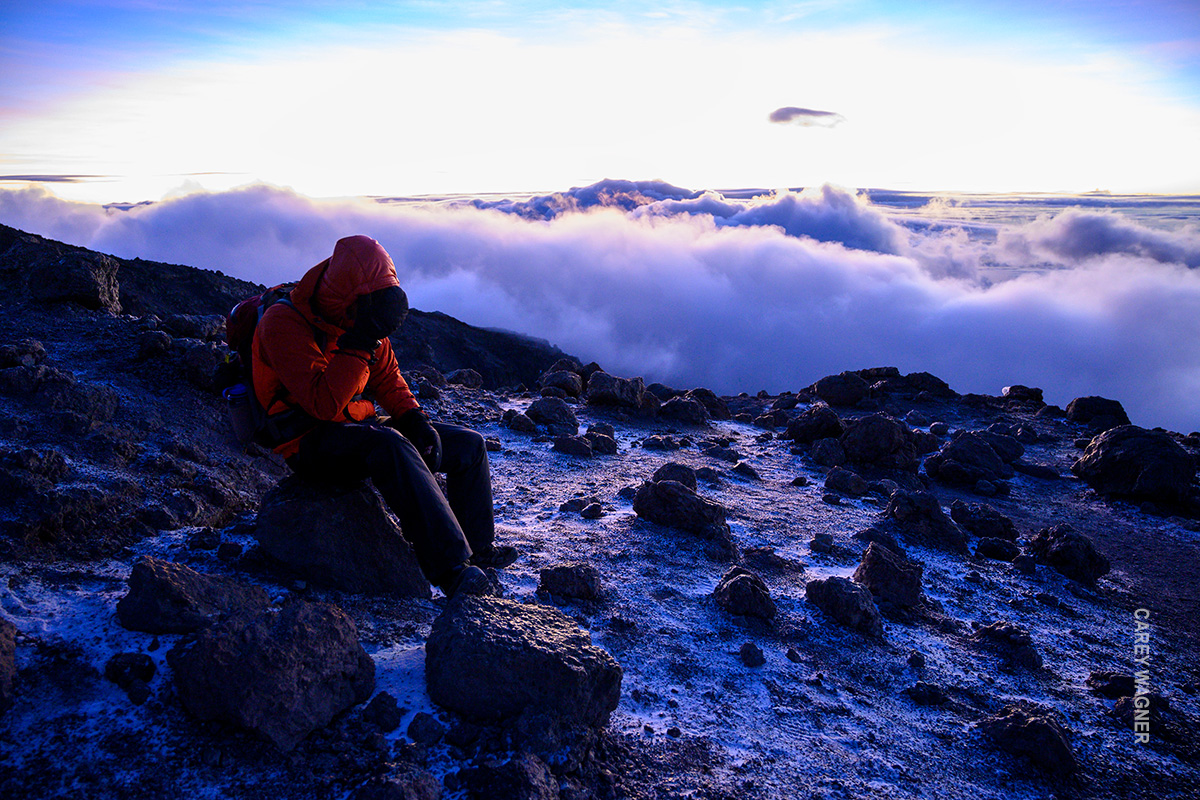
Most trekkers experience some symptoms of altitude sickness when trekking–this is normal! Pulse oximeters are your best friend here. Your guides will use them every day to check your blood oxygen levels and heart rate. Generally, so long as they determine your symptoms are mild, it’s acceptable to continue trekking.
Your travel doctor may also recommend medications like Diamox for the prevention and treatment of altitude sickness. Many trekkers have found them invaluable on the mountainside.
Risk: Trying to “Power Through” the Pain
Powering through adverse conditions is what makes a Kilimanjaro trek so satisfying. But there are some adverse conditions you shouldn’t ignore–even mild altitude sickness is one of them.
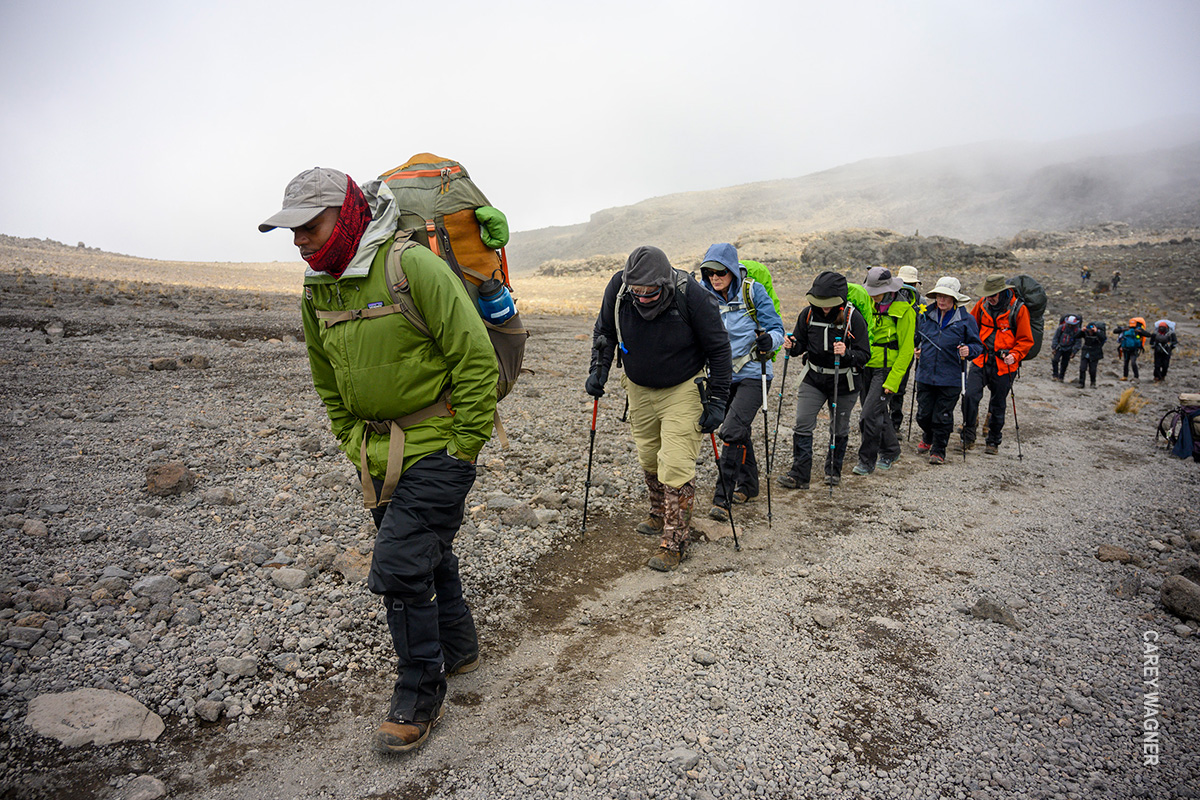
“It’s just a headache,” you might say. “I don’t need to tell anyone.”
Don’t be this person! Communicate with your guides. Tell them what’s up, even if your symptoms are relatively innocuous. Chances are they can already tell, but proactive communication will help you combat the symptoms more easily than if you wait until they worsen.
“The altitude really takes a toll on you, especially on summit day,” Thomson staffer Brittany Silva said of her trek. “I was open and honest about all my symptoms with my guides, and they assured me that what I was feeling was temporary, and that I could do it, which really helped.”
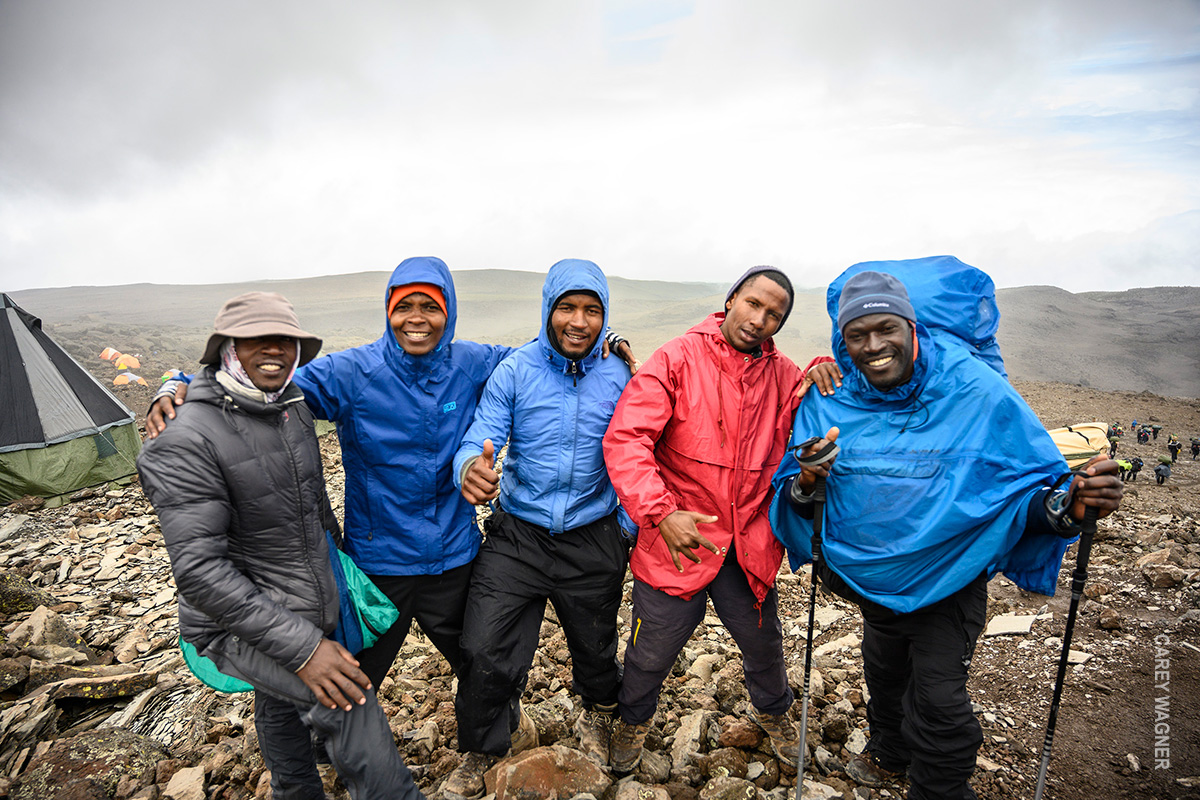 Thomson guides and porters
Thomson guides and porters
If you experience an infection, a cold, aching joints or anything else, do not hesitate to communicate this! Guides trained as Wilderness First Responders will know how to respond to any mountainside scenario and will help you formulate a plan.
For Your Safety: Trek with the Right Gear
No matter how much you train and prepare for Kilimanjaro, no matter how mindfully you step, you’re still at the mountain’s mercy. If injury, sickness or other medical situations arise, you want to know you’re trekking with a company that can provide the care you need.
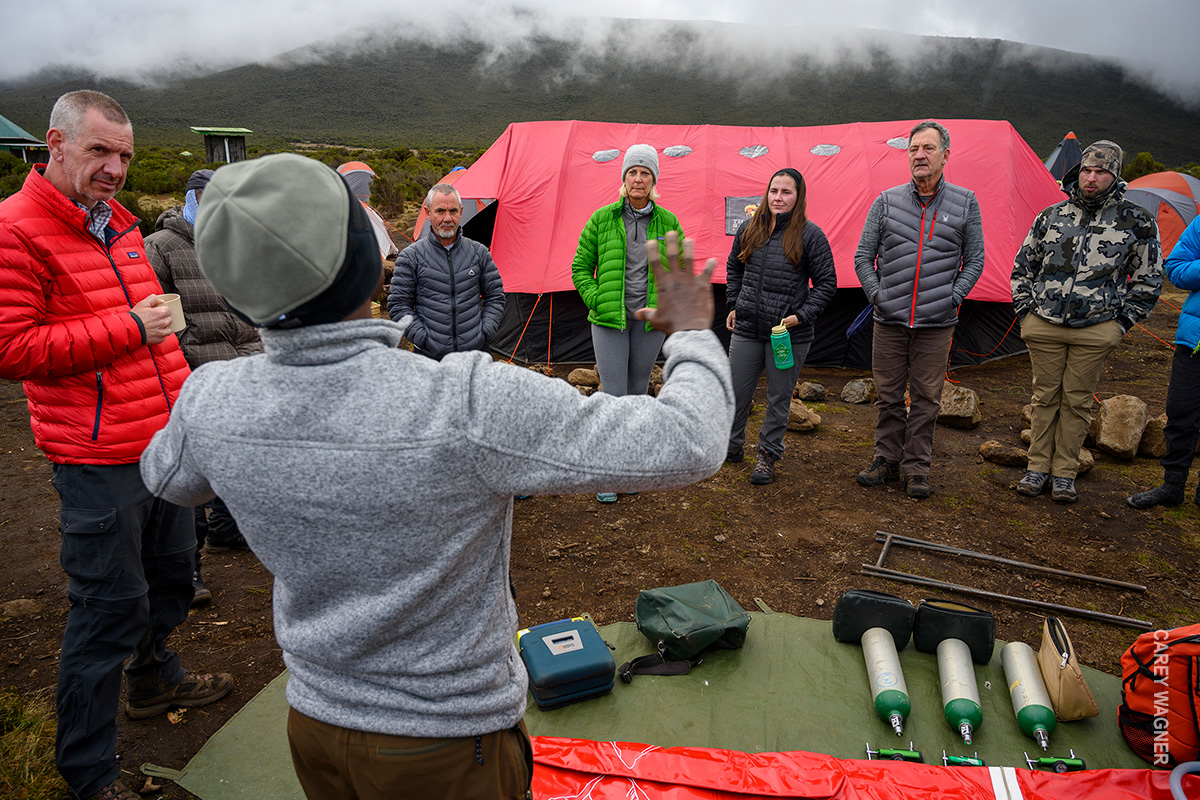 Safety briefing on the mountain
Safety briefing on the mountain
We’ve checked and rechecked Thomson’s safety gear list against other companies, and we’re proud to say it exceeds all others in the provision of equipment, communication devices and preparedness for emergency response.
Here’s what Thomson guides and porters carry:
- Pulse oximeters. Your head guide uses these to check, evaluate and document your heart rate and blood oxygen level every day at dinner.
- Oxygen kits. More per trekker than any other Kili operator
- First aid and medical kits
- Evacuation stretcher. The only rigid stretcher design on Kilimanjaro
- Hyperbaric chamber. The only one on Kilimanjaro
- AED (defibrillator) heart-saving devices. Thomson owns more than any institution, anywhere, in Tanzania.
- VHF (Very High Frequency) handheld radios
- Satellite phones
- Climbing helmets, handlines and ice axes on Western Approach treks
Thankfully, much of this equipment is usually not necessary on a trek. But it provides peace of mind to know your guides are equipped for anything.
In Conclusion…
The most decisive choices you make regarding trek safety occur well before you lace your boots and hit the trail. One of the most important is to choose to trek with a company that doesn’t cut corners on safety.
With smart, deliberate planning, your chances of summit success rise dramatically–to 98%, even!

